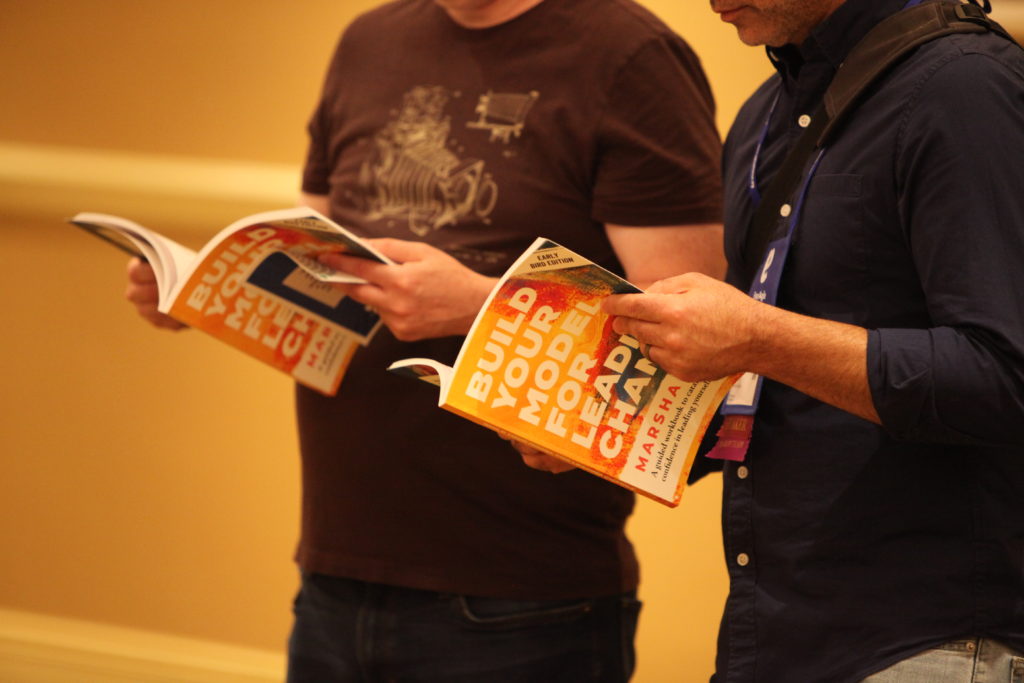In case you missed it, you are suffering from extreme FOMO, or if you are planning ahead for next year… here is an Agile Roundup of the BEST of Agile2022!
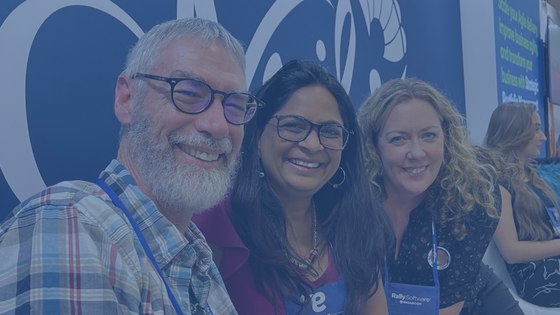
This event was a momentous return to in-person events for many attendees, who came from all corners of the world to attend this conference in Nashville, Tennessee.
Agile 2022, organized by Agile Alliance, was held from July 18 – 22.
From their website: “Agile Alliance’s annual conference is dedicated to exploring, innovating, and advancing Agile values and principles, and creating a space for people and ideas to flourish. The conference brings Agile communities together year after year to share experiences and make new connections. Join passionate Agilists from around the world to learn about the latest practices, ideas, and strategies in Agile software development from the world’s leading experts, change agents, and innovators.”
We asked our friends and colleagues who attended to share their feedback, based on five questions. We are excited to introduce you to our featured contributors:
- William Strydom, Coach
- Jason Hall, Organizational Coach
- Tricia Broderick, Leadership Advisor
- Sally Elatta, CEO AgilityHealth
- Israel J. Pattison, ScrumMaster at SoftPro
- David Fogel, Professor of Agile
- Anjali Leon, Founder and Principal Agility and Product Coach at PPL Coach
- Lynn Wolf-Hill, Enterprise Coach
- Amy Neff, Lean Agile Coach
- Joanne Stone, Agile Coach, Transformation Coach, Leadership Coach, Founder of Wick’d Agility
- Marsha Acker, Principal at TeamCatapult, Leadership and Team Coach, Author, Speaker
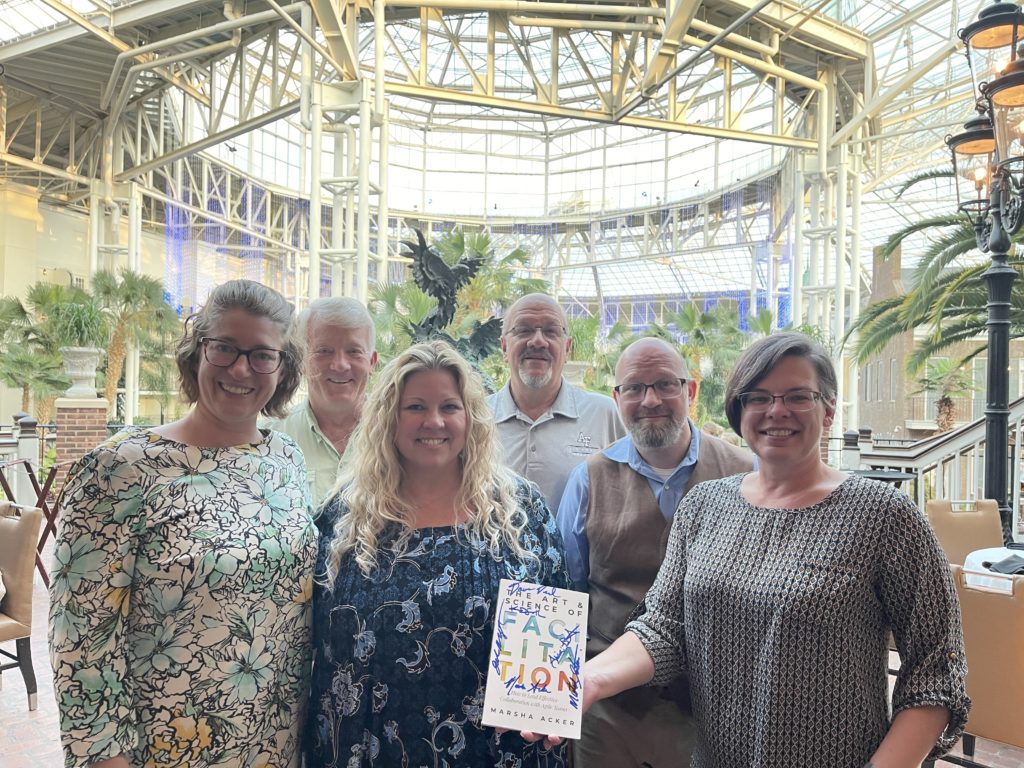
What was it like to come to Agile2022 after a 2 year hiatus?
The first question we asked of everyone was a loaded one! We’ve all felt the sting of isolation, of quarantining, of working remote vs in-person. What was it like to meet up with friends and colleagues for the first time since march 2020?
Here are their answers:
- William -It felt overwhelming at first to see and be with so many people in one place!
- Jason – It was heart felt like none before. Every conversation was that more intimate and every new connection that much more grounded.
- Tricia – Soulfilling
- Sally – Refreshing
- Israel – Agile 2022 is my first time attending a national conference on agile. I usually attend the annual regional conference in Raleigh, TriAgile. It is good to have in-person options return after two years, and I was thrilled to be able to attend.
- David – It was like a sprint zero – I was engaging with folks in way that felt new and well precedented at the same time. I had to check a lot of assumptions… and I then realize I had more assumptions to check… oh wait, there are a few more. Now I am ready for Sprint ONE in 2023!
- Anjali – I was very much looking forward to presenting the ideas that my co-presenter and I had been working on through the pandemic and getting feedback from our community. It received lots of positive feedback and support that was invigorating. The true joy was remembering what it feels like to be with a tribe and to have each conversation be deep and meaningful. I left with a lot more connections and lifelong than I expected.
- Lynn – Rewarding to reconnect & also see how agile has evolved
- Amy – Refreshing and great to connect with people again! I found I really needed to hang out with my agile peeps!
- Joanne – At first overwhelming and then turned to more delight every day. I started before the conference with the World Wide Coach Camp and a beautifully small group of 40 souls. How wonderful to spend time at the Nashville Zoo and these great individuals. A beautiful gentle start. Agile2022 is the very first big Agile conference I have been to. I was so amazed that over 1500 people came and the buzz was so incredible. It was overwhelming because I felt so socially awkward – masks on or masks off – do we sit close together or not – how will others feel because of COVID… Yet each day, I felt more at home, more connected to others and the beautiful 40 souls were my familiar faces that I would see in the hallways and meals. I attended one session each day as I was preparing for my panel on Thursday. I will definitely go to Agile2023 as I made so many new connections and the space that was created by the Agile2022 crew was very warm and welcoming. Thank you all! Finally, the conference gave me hope that we can adjust and meet in person.
- Marsha – It was so amazing to see colleagues and friends, in person, after such a long period of not gathering together. The hugs and smiles and laughter were well worth it! This event for me this year was more about re-connecting than anything else.
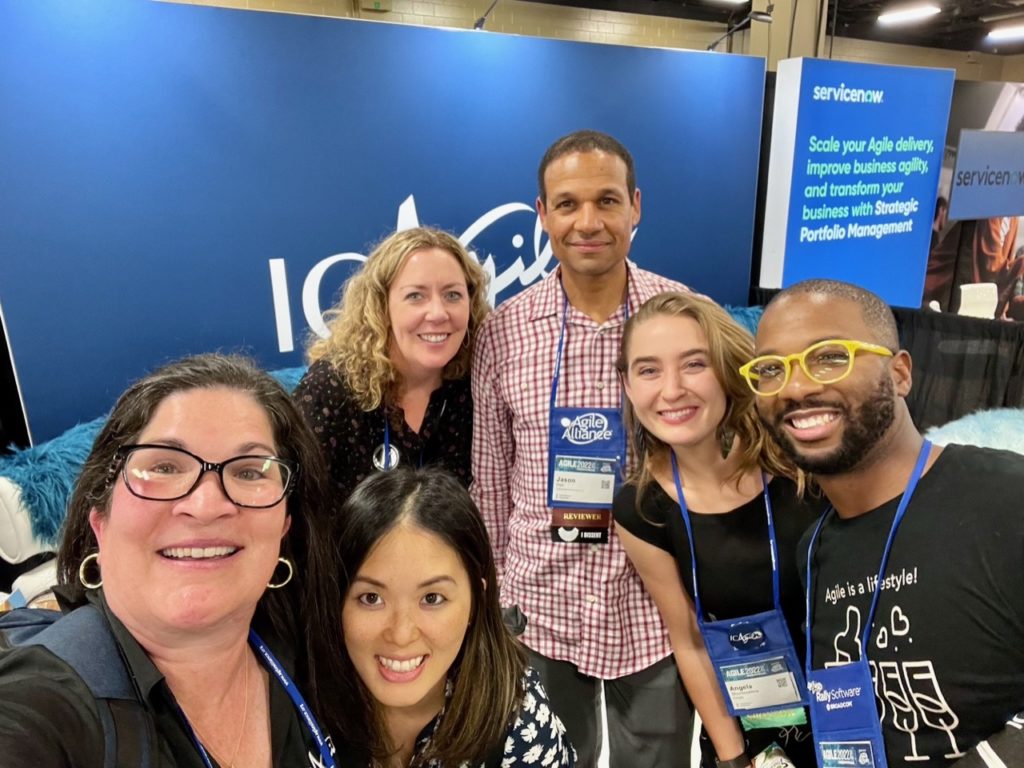
Is there an Agile2022 speaker – or a quote you loved the most?
Of course, we wanted to know what our friends learned at #Agile2022. They all had a favorite speaker or quote!
- William – Kelsey Hightower’s keynote on Engineering with Empathy was great. It brought the human factor to the forefront in whatever we do.
- Jason – I’m horrible at remembering quotes but I can remember a speaker’s essence from Kelsey Hightower’s empathy centered approach to technical leadership, to Bethany Andres bucking the hierarchical norm, to Yvette Hatton’s elevation of product management/design above the typical tropes.
- Tricia – Linda Rising
- Sally – “What did you do when you knew?” Lyssa Adkins from the poem
- Israel – Kelsey Hightower’s keynote, Engineering with Empathy, emphasized for me the importance of carrying the human impact of product development with us from the earliest conversations and requirements. I was reminded who benefits from our work and how our products impact their dignity and purpose.
- David – Bethany Andres-Beck gave a great presentation on “Radical Culture of Culture Building”
- Anjali – “agile is a humble adjective” – Joshua Kerievsky
- Lynn – “agile is connecting the dots.” I really liked the blunt honesty of Melissa Perri.
- Amy – Christine Hudson and Ronica Roth
- Joanne – Lyssa Adkins
- Marsha – I loved the opening keynote speaker – Kelsey Hightower. He said “A 10x engineer is not someone who is just working 10x better than anyone else. I think a 10x engineer is the type of person who can come in and make 10 other people better than they were before”
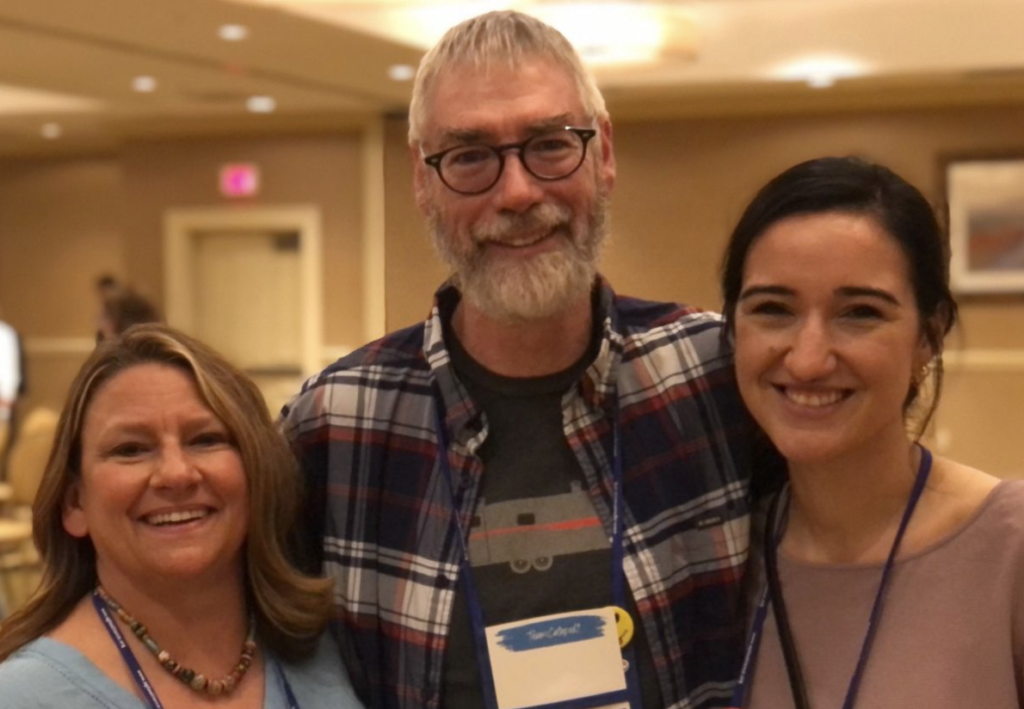
Was there any practical advice you received at Agile2022 that you can use right away?
This questions is one everyone loved! Who doesn’t love implementing NEW things, NEW ideas, NEW concepts?
- William – Yes, Woody Zuill’s “Turn UP The Good”. I think we can all turn up the good in our own ways.
- Jason – Jenny Tarwater’s awesome Interview prompt “What question do you wish I would ask you?”
- Tricia – Analyze and apply ways to better offset carbon footprint
- Sally – Yes got great advice on writing a book and resources to leverage
- Israel – I am offering weekly Agile Office Hours in my company after the idea was presented in one of our sessions. Offering training, coaching, or mentoring on a regular basis makes more sense to me than waiting for the opportunity to find me.
- David – “My desire to express myself requires me to focus on my intrinsic goals. But my desire to progress requires that I follow extrinsic goals – which have a psychological tendency to subsume interest in intrinsic intrinsic goals.”
- Anjali – “What do you do when you have outgrown something? You can start something new.” – Marsha Acker
- Lynn – The CLEAR workshop was very helpful as a model.
- Amy – Yes, this session was full of information on how to facilitate meetings that help change and influence culture changes you want to see.
- Joanne – Sara Baca’s – clean language exercise about fitting in vs belonging. Through the exercise I realized that it was ok to be both and that there did not need to be an either/or or a good/bad between the two choices.
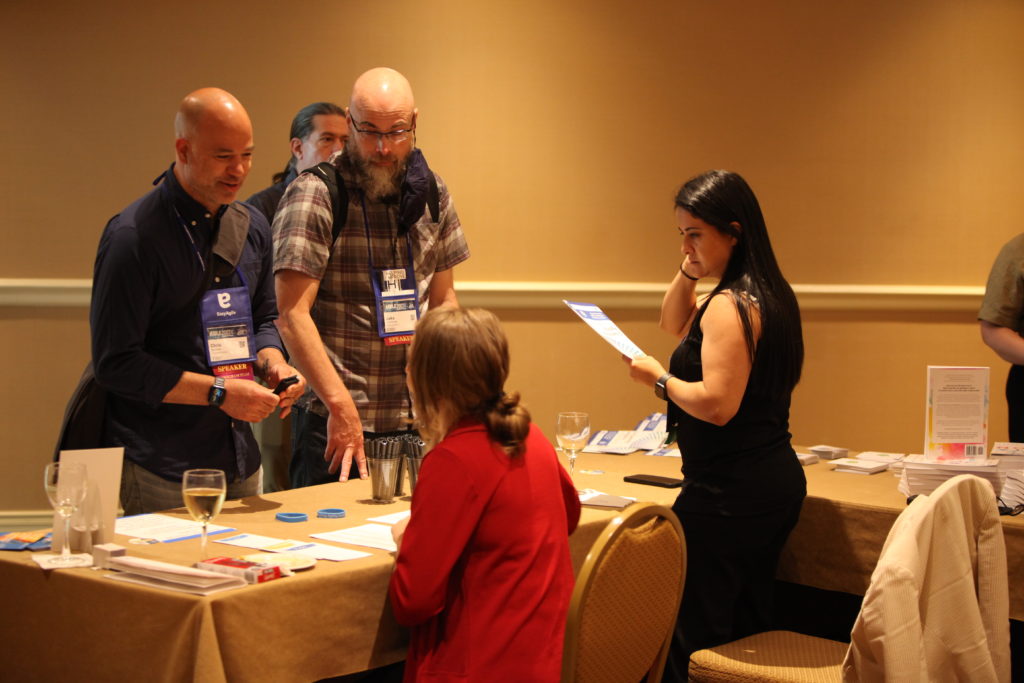
What did you bring home from Agile2022?
The fun question in the bunch, and the one with the most surprising answers!
- William – Lots of a-ha’s from conversation with people at the conference and great swag from the ICAgile folks.
- Jason – Marsha’s amazing book of course, Build Your Model for Leading Change and a proper backpack courtesy of ICAgile.
- Tricia – poster and pictures
- Sally – Didn’t bring back COVID
- Israel – I drop-shipped eleven books home before my flight including a collection of four books from Scrum.org that I won in the door prize drawing and, of course, Build Your Model for Leading Change by Marsha Acker. I’ve been passing out a whole bag full of swag to folks at the office this week.
- David – WAY TOO MUCH FOR THIS SPACE! On Saturday 7/23 I started using my TC pen! ALSO I absolutely treasure my copy of Marsha’s Facilitation book – signed by the six of us from DAU who attended the conference together! Third, my thinking partner and I are looking forward to Marsha’s new book.
- Anjali – No a lot….except an ICAgile hoodie and laptop bag, Marsha’s Facilitation book and Workshop on creating your model for change.
- Lynn -Um. Everything? Grandkid-rules
- Amy – 2 books, Marsha’s new book (woohoo), Esther Derby 7 rules for positive productive change and lots of other swag.
- Joanne –An amazing book from Marsha Acker, backpack and journal from ICAgile … I wish I could bring home all the new connections and old connections 🙂
- Marsha Acker – Not much this time! The conference was really light on paper handouts (which IMO is great!) and I just didn’t find the need to collect a lot of stuff! We did have our camper in town and so I got a teal foldable seat from the ICAgile booth on Thursday afternoon (they were giving away their decorations) that is now part of the camper decor! HAHAH!
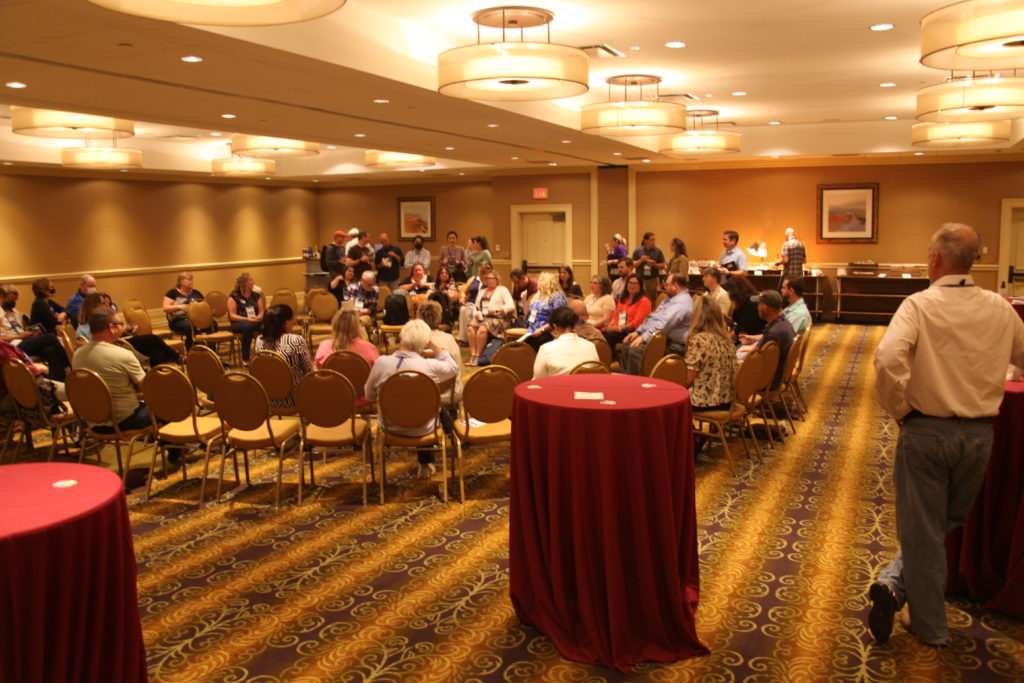
How did Agile2022 impact you?
Read these answers if you are considering coming to #Agile2023! Lots of great insight into why meeting in-person is important.
- William – It was great to meet new people and reconnect with friends I have not see in awhile. It reminded me that we are part of a wonderful collective that has a positive impact on the world.
- Jason – It recharged me for the next 5000 zoom calls!
- Tricia – Gave me hope
- Sally – Energizing and felt connected again to my tribe
- Israel – Many of the concepts that have been pounded into my head over the past decade seem to be all wrong now, and the cognitive dissonance is weighing on me heavily. How many times over the course of the week did I hear not to create roadmaps, not to use Story Points, not to use User Stories – all considered waste now apparently. Oh, and all those metrics I pride myself on – well, those appear to be out of fashion, too. The new, hot freshness looks interesting, but when will I ever have a chance to try them out?
- David – Most plans to go to Mars, require a slingshot around the moon – and I now have multiple goals that will be launched now that we passed our Agile2022 Moon!
- Anjali – I blogged about this… This year activated a shift. This year brought deeper connection. This year welcomed more intense dialog. This year heightened serendipity and synchronicity. This year felt like a ‘yes’ to play a bigger game.
- Lynn – It made me Remember that learning means not resting on my laurels
- Amy – Lots of positive impacts for me. I am inspired to experiment and try different techniques as a coach. Also, I am excited about connecting with other agilists going forward.
- Joanne – Provided me hope that there are other agilists out there who care about making an impact on planetary challenges. We have a wonderful community.
- Marsha – Profound impact of re-connecting with people! So great to be back other other humans!
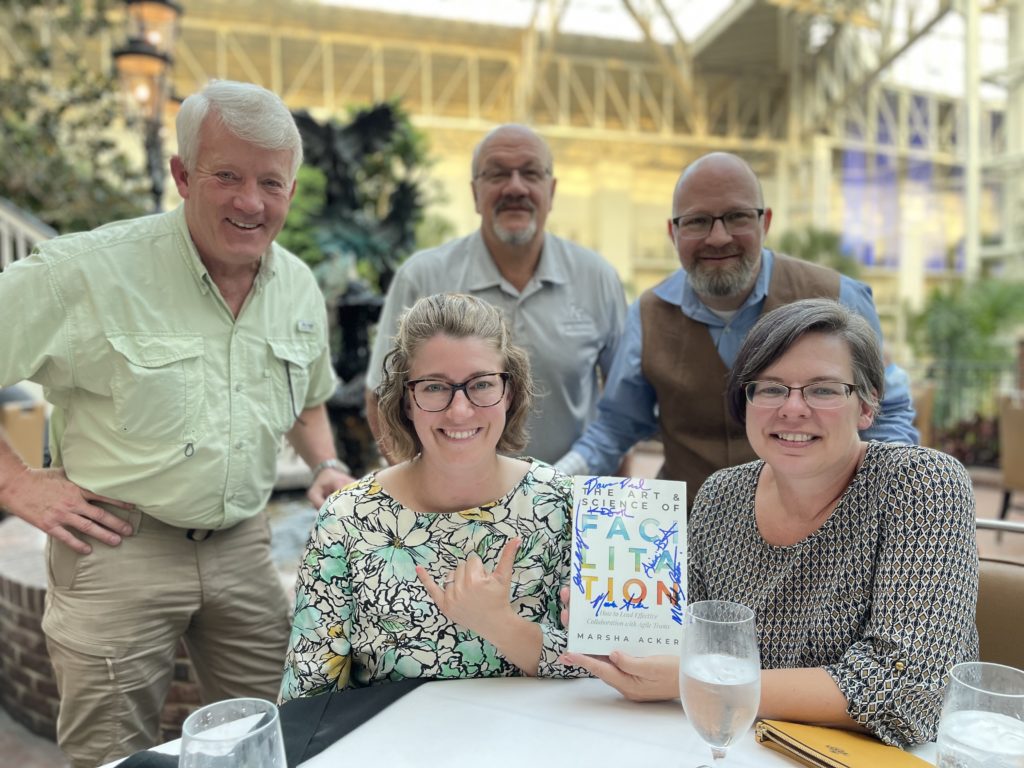
We are Better Together! #Agile2023 Here We Come!
If you missed it don’t feel bad – but spring into action.
Make it a goal to attend #Agile2023 and meet these fabulous contributors, the speakers they talked about and fellow attendees. A huge thank you goes out to all who participated in this roundup post. We appreciate you!
PS Are you sorry you missed out on our private event at #Agile2022?
Come join us for a LIVE book club discussion for my new book ‘Build your Model for Leading Change‘.
